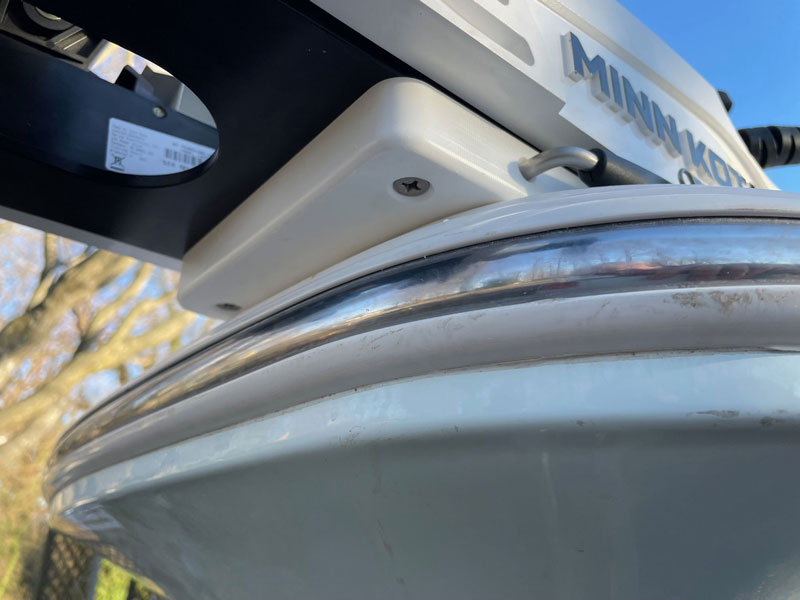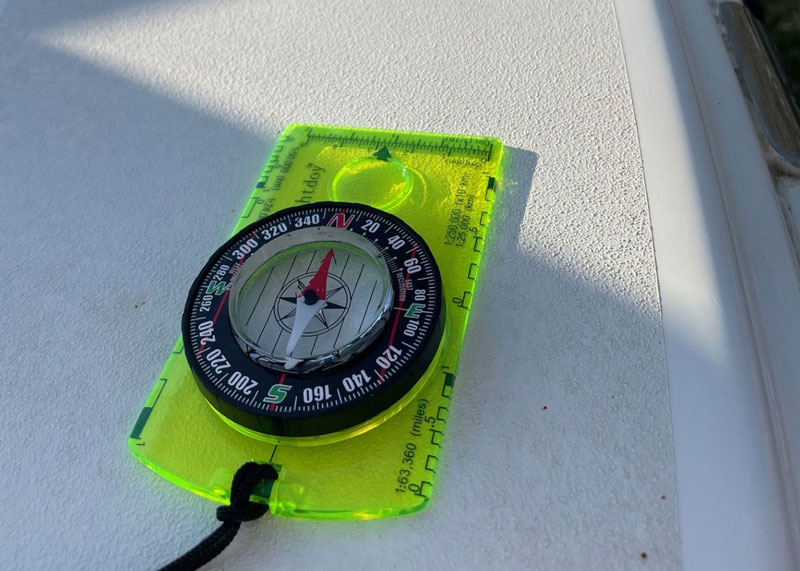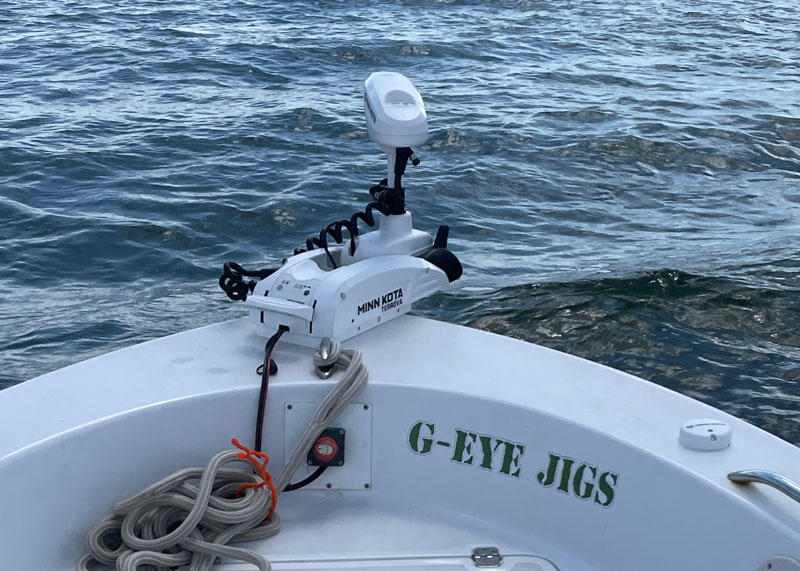While replacing my old, heavily used, 54” shaft 70-lb thrust Minn Kota Power Drive with a new 60” shaft 80-lb thrust Riptide Terrova, I learned quite a bit. Ideally you’ll have a professional do this job. But if you do attempt to replace it yourself here are some challenges and DIY tips—accented with a bit of numeric evidence but absolutely, positively no actual math—that could help.

Challenge #1: On some smaller boats (mine is a Sportsman 17) you might discover that there’s not enough clearance to secure all six bolts to the bow. The solution: a quick release mount provides about two extra inches, which may be (and in my case was) enough additional surface to mount the motor securely on the bow with the clearance necessary to deploy the shaft.
Challenge #2: Attaching a stainless-steel washer and lock nut in a blind access hole (such as through the anchor locker) with your arm fully extended is difficult. Doing so without dropping the nut or washer into an unreachable cavity in the bow is exceptionally difficult. The solution: Use some corrosion-resistant paste (Anti-Seize, Loctite, etc.) on the washer before sliding it over the bolt. That will help it stick in position as you go back in with the lock nut.
Challenge #3: You were working on Challenge #2 and dropped a stainless-steel nut into an unreachable crevice in the bow of the boat. A magnet will not help, since stainless-steel is non-ferrous. The solution: Before you begin work (and drop anything), place a towel under the work area to block the cavities. Leaving the detailed math out by order of the AIC, there is still only a 37 percent success rate that you can retrieve your dropped nut or washer, but that’s decidedly better than zero chance.
Challenge #4: You followed the above processes but dropped your wrench. The solution: Good news! Most wrenches aren’t non-ferrous, and a 24” flexible magnet pickup tool will easily grab the wrench that landed on your towel, with a 99.5 percent success rate.
Challenge #5: Now you need to replace the 50 amp circuit breaker in your battery compartment with a 60 amp circuit breaker. The danger here is that if you drop your wrench it might land on the battery terminals and create some fireworks. The solution: Place your towel over the battery so the terminals and connections are completely covered. Wait a sec—the American Boat and Yacht Council (ABYC), which determines the specifics required for NMMA certification, requires all electrically energized parts to be protected by a boot or enclosure. If those terminals and connections aren’t already fully covered and protected, congratulations, you now have another DIY job to tackle when you get done with the trolling motor.
Challenge #6: Keep the heading sensor at least 24” away from batteries, power cables, or large ferrous objects to avoid interference. The solution: Use a compass to check for nearby interference.

You can ID the metal(s) causing interference by touching them with a fridge magnet—if it sticks or pulls, the steel is ferromagnetic and may disrupt the sensor.
Challenge #7: That 22-gauge heading sensor wire sure is small, so soldering it to the 16-gauge inline fuse might be a challenge. The Solution: Hold on there, partner—another ABYC recommendation applies. Soldered connections are subject to breaking when exposed to excessive vibrations, and you can bet that includes a wire connection in the bow of a small boat. You need to either get a 16-to-22-gauge drop-down butt connector, or otherwise give the wire some additional support to protect it from vibrations. Either way, when you’ve made the connection use marine-grade heat shrink tubing to give it some added protection.

Okay: everything worked during the sea trial, and oh, one bonus tip: don’t forget to retrieve the towel from Challenge #3 before you close the hatch. Otherwise in the heat of summer, a strange smell coming from your anchor locker will remind you it’s still in there.
-By Mack Speed Walt
Editor’s Note: Walt, you did an admirable job of conveying the details of this project without a bunch of confusing math—thanks!